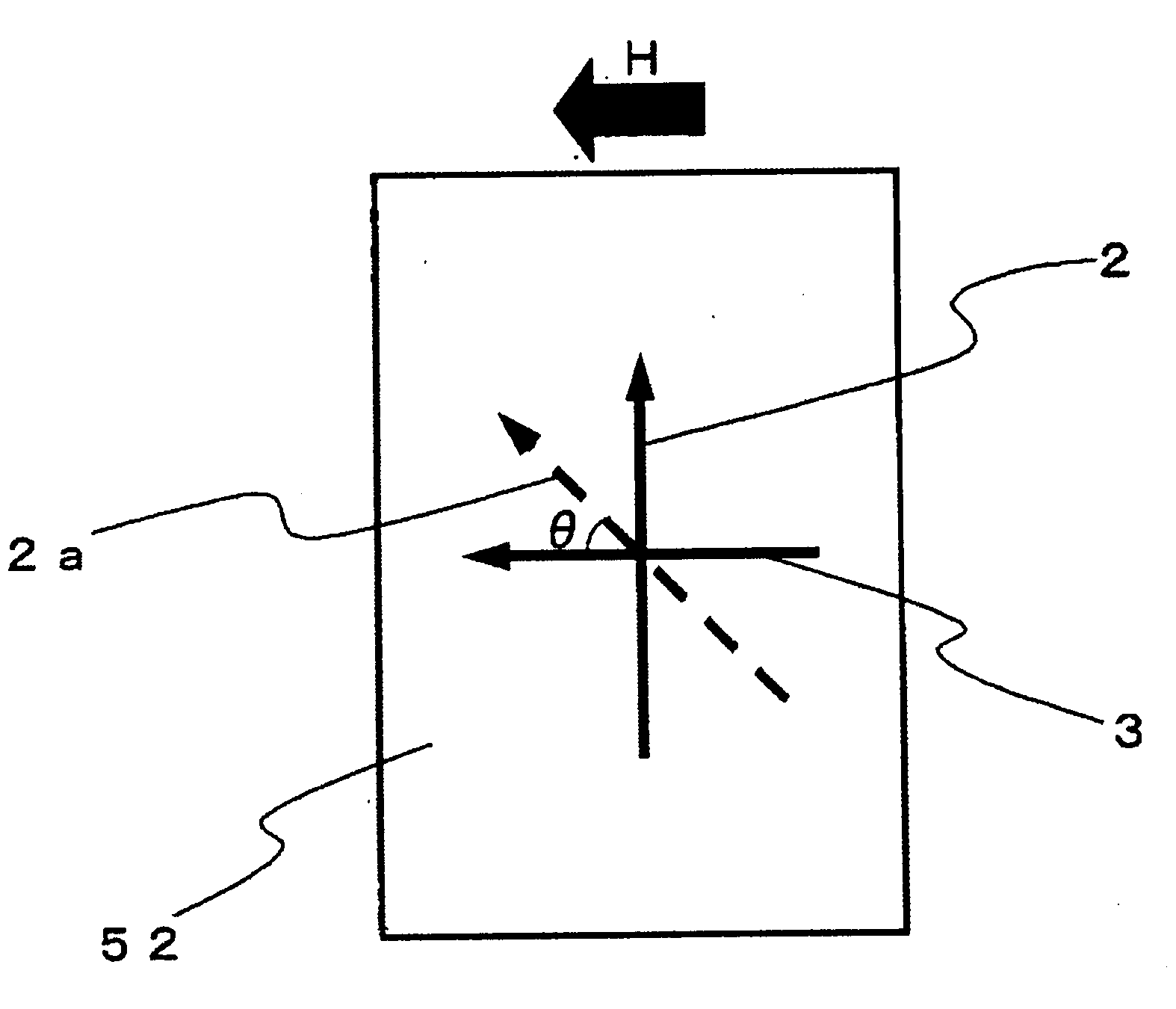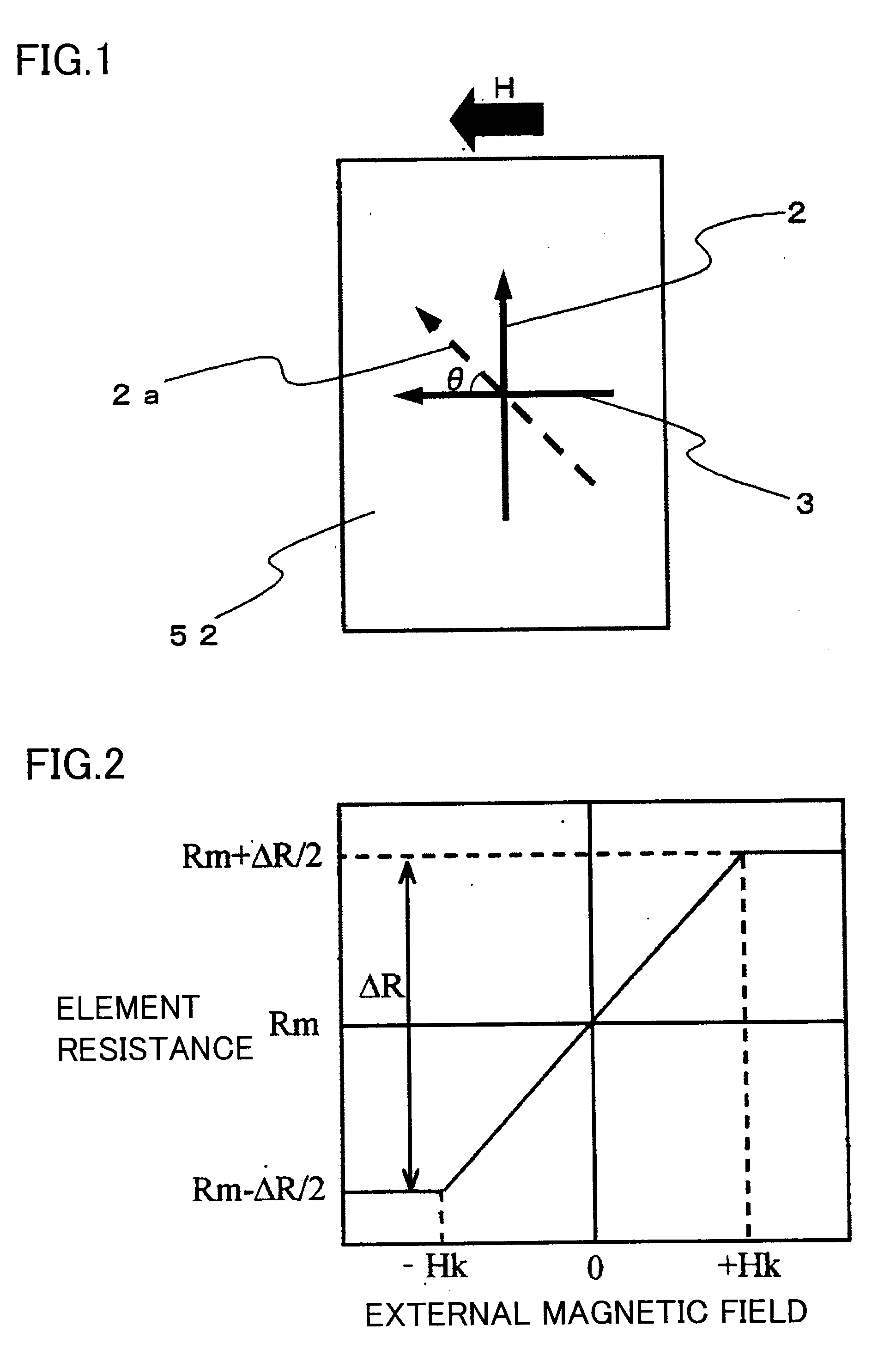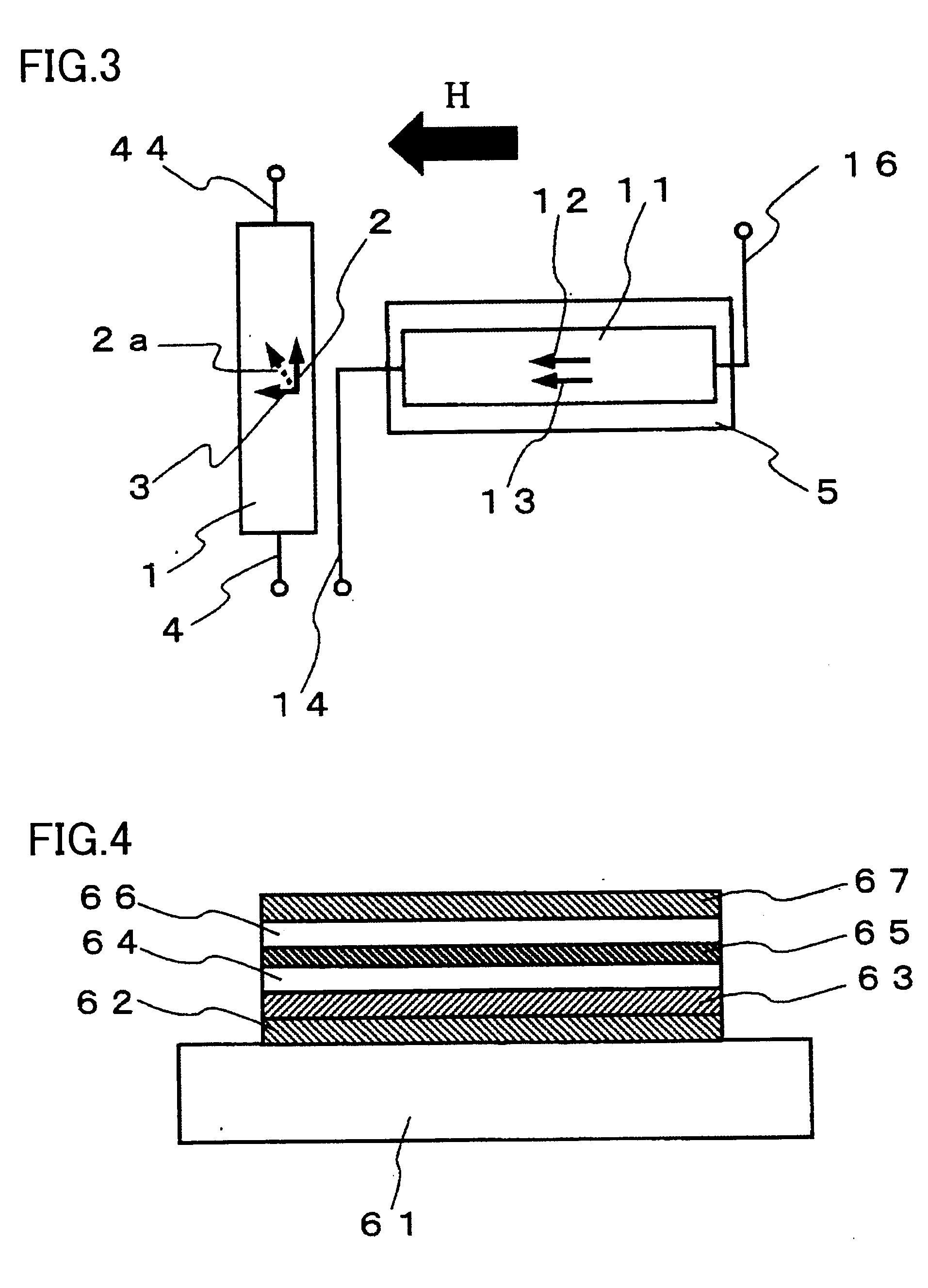Magnetic field detector, and current detection device, position detection device and rotation detection devices using the magnetic field detector
a magnetic field and detector technology, applied in the direction of galvano-magnetic devices, instruments, record information storage, etc., can solve the problem of increasing power consumption and achieve the effect of stable output signal
- Summary
- Abstract
- Description
- Claims
- Application Information
AI Technical Summary
Benefits of technology
Problems solved by technology
Method used
Image
Examples
embodiment 1
[0049]FIG. 3 is a plan view showing a magnetic field detector according to a first embodiment of the present invention. The shown magnetic field detector has one detecting magnetoresistive element 1 (hereinafter referred to as the detection element) and one reference magnetoresistive element 11 (hereinafter referred to as the reference element). The sectional structures of elements 1, 11 are shown in the schematic diagram of FIG. 4. In FIG. 4, a wiring layer 62 is formed on a substrate 61, and then an antiferromagnetic layer 63 is formed. Next, a first ferromagnetic layer 64 (fixed layer) of a ferromagnetic material with the direction of magnetization thereof fixed by antiferromagnetic layer 63 is formed. Further, a nonmagnetic layer 65 constituting an tunnel insulating layer is formed, above which a second ferromagnetic layer 66 (free layer) of a ferromagnetic material with the direction of magnetization changed by the external magnetic field is formed. Above second ferromagnetic l...
embodiment 2
[0078]According to this embodiment, as shown in FIG. 6, a bridge circuit is formed by adding a set of elements having the same configuration to detection element 1 and reference element 11 of the first embodiment. The detection element 41 and the reference element 51 added have the same configuration as detection element 1 and reference element 11, respectively, and therefore are not described again. Also, the directions of magnetization of the first and second ferromagnetic layers of detection elements 1 and 41 are the same. In this case, ΔV1 can be obtained by supplying the current from wires 7 to 77 and measuring the potential difference between wires 8 and 88.
[0079]According to this embodiment, the elements are formed as a bridge circuit and therefore a larger output can be obtained.
embodiment 3
[0080]FIG. 7 is a plan view showing a magnetic field detector according to a third embodiment of the present invention. The magnetic field detector according to this embodiment further includes a reference element 21 in the magnetic field detector according to the first embodiment. In this embodiment, the same component parts as those in the first embodiment are designated by the same reference numerals, respectively. Elements 1, 11, 21 have a similar stack structure to the first embodiment. In this embodiment, elements 1, 11, 21 are all formed in a rectangle. Elements 1, 11, 21 have not necessarily the same aspect ratio but have the same area to equalize the element resistance.
[0081]Of the directions of magnetization 3, 13, 23 of the first ferromagnetic layers of elements 1, 11, 21, direction of magnetization 3 and direction of magnetization 13 are parallel to each other, and direction of magnetization 13 and direction of magnetization 23 are antiparallel to each other. Direction o...
PUM
| Property | Measurement | Unit |
|---|---|---|
| angle | aaaaa | aaaaa |
| output voltage | aaaaa | aaaaa |
| output voltage | aaaaa | aaaaa |
Abstract
Description
Claims
Application Information
 Login to View More
Login to View More - R&D
- Intellectual Property
- Life Sciences
- Materials
- Tech Scout
- Unparalleled Data Quality
- Higher Quality Content
- 60% Fewer Hallucinations
Browse by: Latest US Patents, China's latest patents, Technical Efficacy Thesaurus, Application Domain, Technology Topic, Popular Technical Reports.
© 2025 PatSnap. All rights reserved.Legal|Privacy policy|Modern Slavery Act Transparency Statement|Sitemap|About US| Contact US: help@patsnap.com



